Ed Baynard
Fire Island Pines 1981
June 21—July 19, 2024
Opening reception: Friday, June 21, 6-8pm
“My work is my identity accepted; but not understood by me or others.”—Ed Baynard
Ed Baynard’s (1940-2016) oeuvre as a painter and draftsperson is deeply idiosyncratic and yet hyper-sharp. Raised in Washington DC, Baynard lived in Paris and London during the 1960s before returning to the United States, where his first solo exhibition took place in 1971 at Willard Gallery, New York, upon the recommendation of Agnes Martin. Establishing a remarkably restrained artistic vernacular, Baynard found great room for an intense exploration of style that expanded across hundreds of paintings and drawings of ceramics, flowers, nature, and people, unremitting until his death in 2016.
On view to the public for the first time, this exhibition introduces Baynard and his work through a highly personal group of works on paper made during the summer of 1981 in the Fire Island Pines (often referred to over the past century as the country’s first gay and lesbian town). Within these intimate meditations on sky and sea rendered in colored pencil, Baynard shares his outlook from a place of refuge and time of rest. The year these works were made also marks the year that the HIV/AIDS epidemic came to public attention, which would ultimately take the life of Baynard’s partner. Seen from today’s perspective, the works are saturated with Baynard’s love for the beauty of the natural world and observations of his community within it, and at the same time seem to behold a kind of calm before the storm.
These works therefore offer us a key to Baynard’s oeuvre writ large. While the artist’s work is highly recognizable for its extraordinarily precise and extremely flattened imagery, often possessing complex bursts of detail and color against vast monochrome backgrounds, Baynard’s drawings emphasize the deeply personal and aesthetically transgressive nature of his precise vision. Indeed the artist’s works manage to recall a syncretic range of art historical knowledge and influences. Baynard’s starkly two-dimensional, oftentimes free-floating forms combine skilled precision with flourishes of imperfect expression—drawing reference to Zen minimalism, Georgia O’Keeffe’s observations of the American landscape, Charles Demuth’s linear Precisionism, and the tradition of Japanese Ukiyo-e prints.
The eclecticism of these references parallel that of Baynard’s creative life: beyond his practice as a painter, Baynard had been a graphic designer for The Beatles, a clothing designer for Jimi Hendrix, and appeared in Jack Smith's cult film Flaming Creatures (1963). Intrinsically, Baynard thus formulated a wide-open aesthetic space that made room for the subjective and the expressive as much as it did the rigorously mathematical. This exhibition seeks to draw into relief the profoundly personal aspects of his life’s work, wherein Baynard’s direct experience pours into imagery that is highly sensitive, prolifically observational, and deliberately surrounded by an abundance of negative space.
Ed Baynard (1940-2016) rose to prominence as an artist in the 1970s, marked by solo exhibitions with galleries including Willard Gallery (1971), Betty Parsons (1973), Marian Goodman (1977), and Barbara Gladstone in New York (1980/81); as well as John Berggruen in San Francisco (1980). Baynard’s work is held in the permanent collections of The Metropolitan Museum of Art, New York; Museum of Modern Art, New York; Whitney Museum of American Art, New York; National Gallery of Art, Washington DC; Philadelphia Museum of Art, Philadelphia; Walker Art Center, Minneapolis; High Museum, Atlanta; Victoria and Albert Museum, London; Tate Galleries, London; Australian National Gallery; and The Center for Contemporary Graphic Art, Fukushima, Japan. Most recently, in 2019 Baynard’s work was celebrated in an acclaimed solo exhibition held at White Columns, New York, co-curated by Matthew Higgs and Vince Aletti.
Artist(s)
Ed Baynard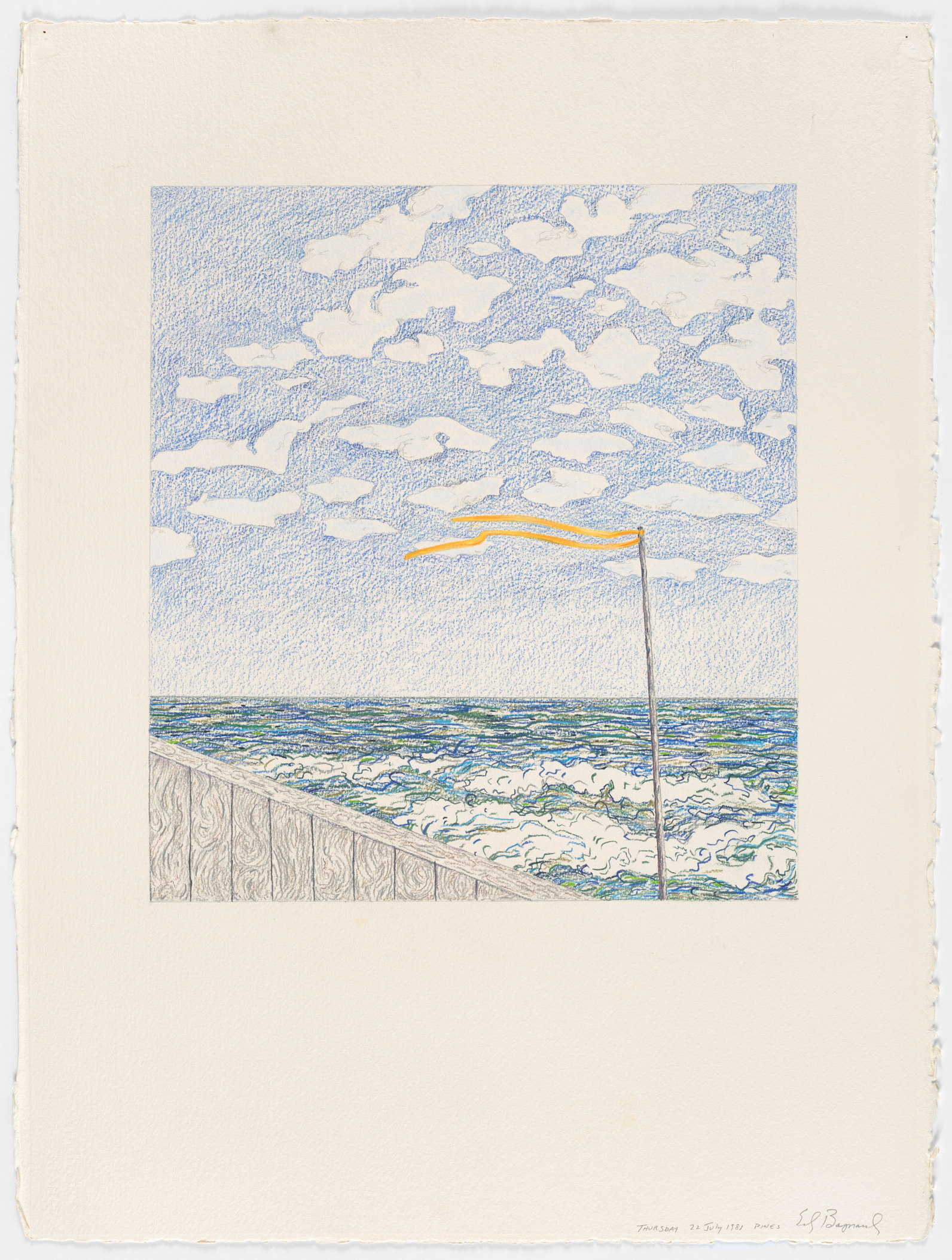
Ed Baynard
Thursday (22 July 1981), 1981
Signed, titled, and dated lower right recto
Colored pencil on paper
30 1/4 x 22 1/2 inches
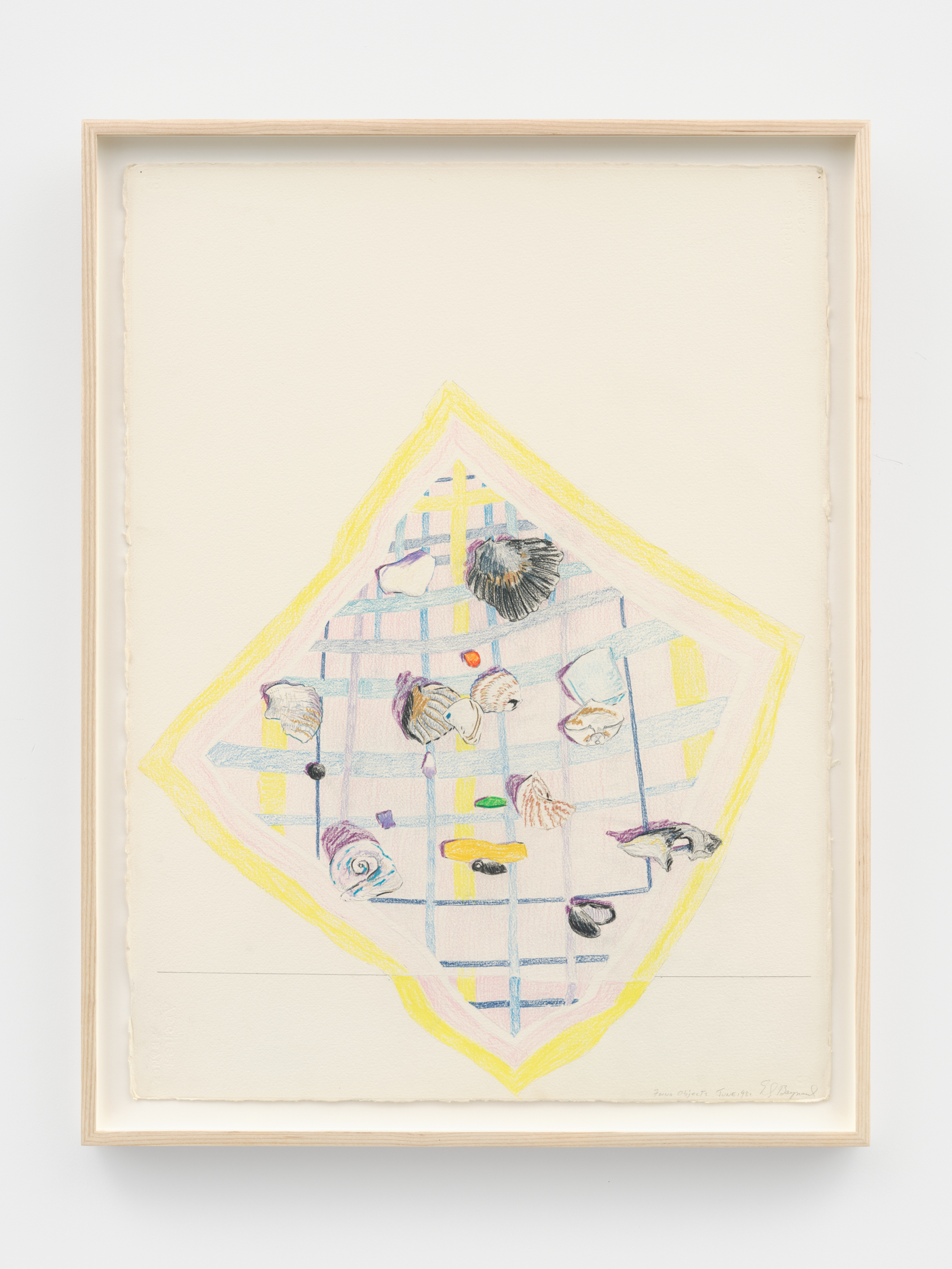
Found Objects (June 1981), 1981
Signed, titled, and dated lower right recto
Colored pencil on Arches paper
30 1/4 x 22 1/2 inches (unframed)
32 1/4 x 24 5/8 (framed)
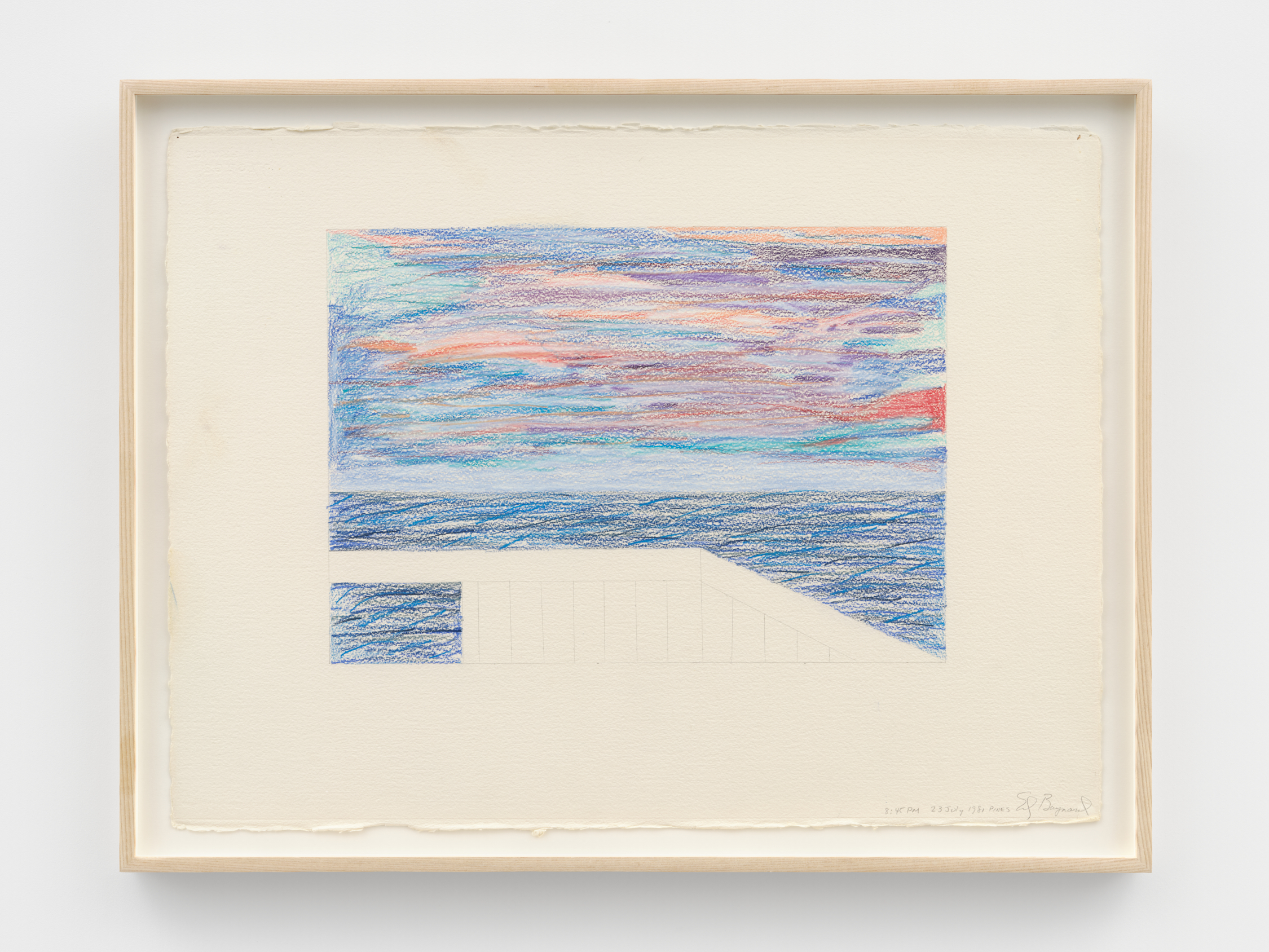
8:45pm (23 July 1981), 1981
Signed, titled, and dated lower right recto
Colored pencil on Arches paper
22 1/2 x 30 inches (unframed)
24 5/8 x 32 1/4 (framed)
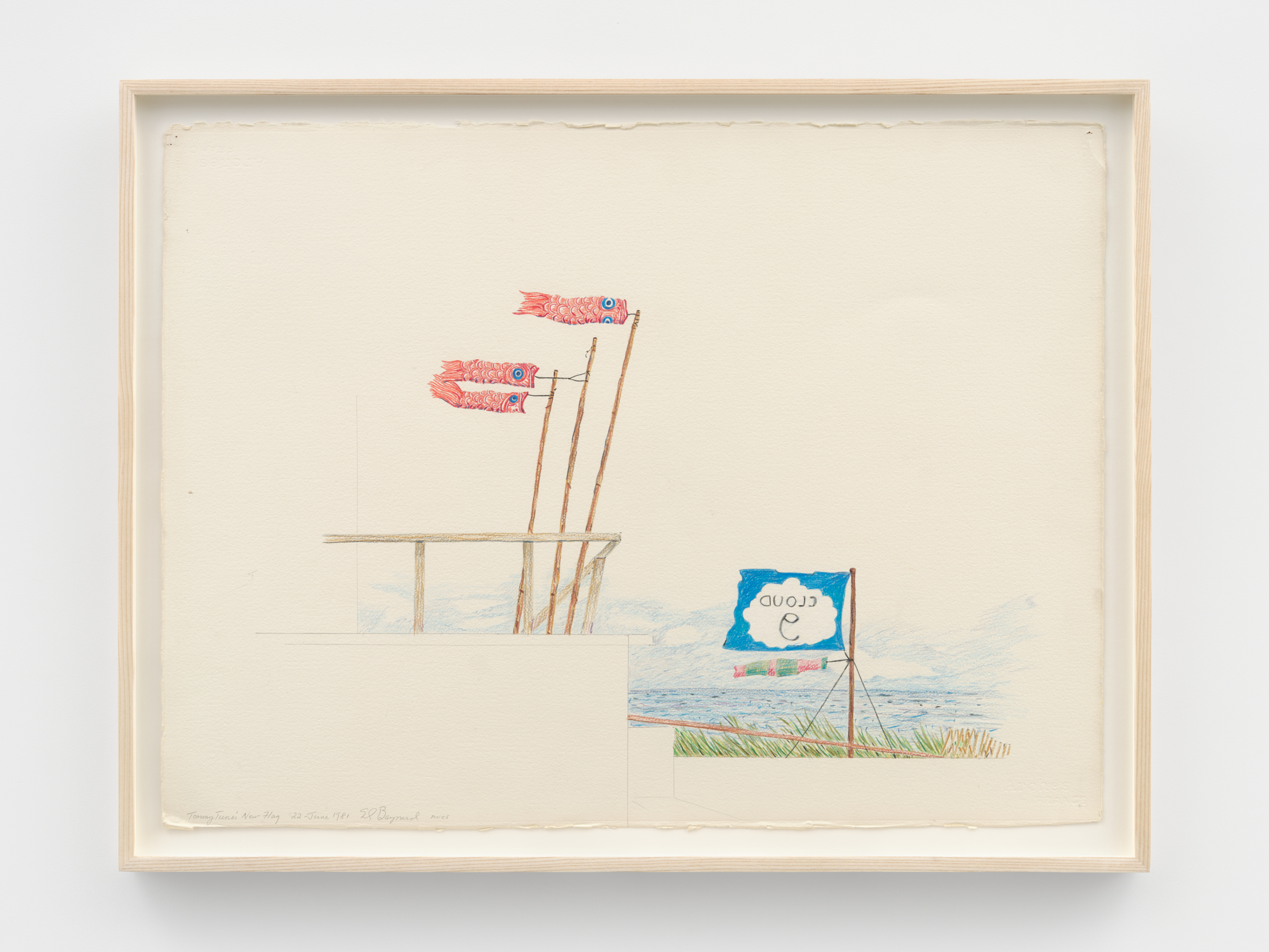
Tommy Tunes' New Flag (22 June 1981), 1981
Signed, titled, and dated lower left recto
Colored pencil on Arches paper
23 x 30 inches (unframed)
24 5/8 x 32 1/4 (framed)
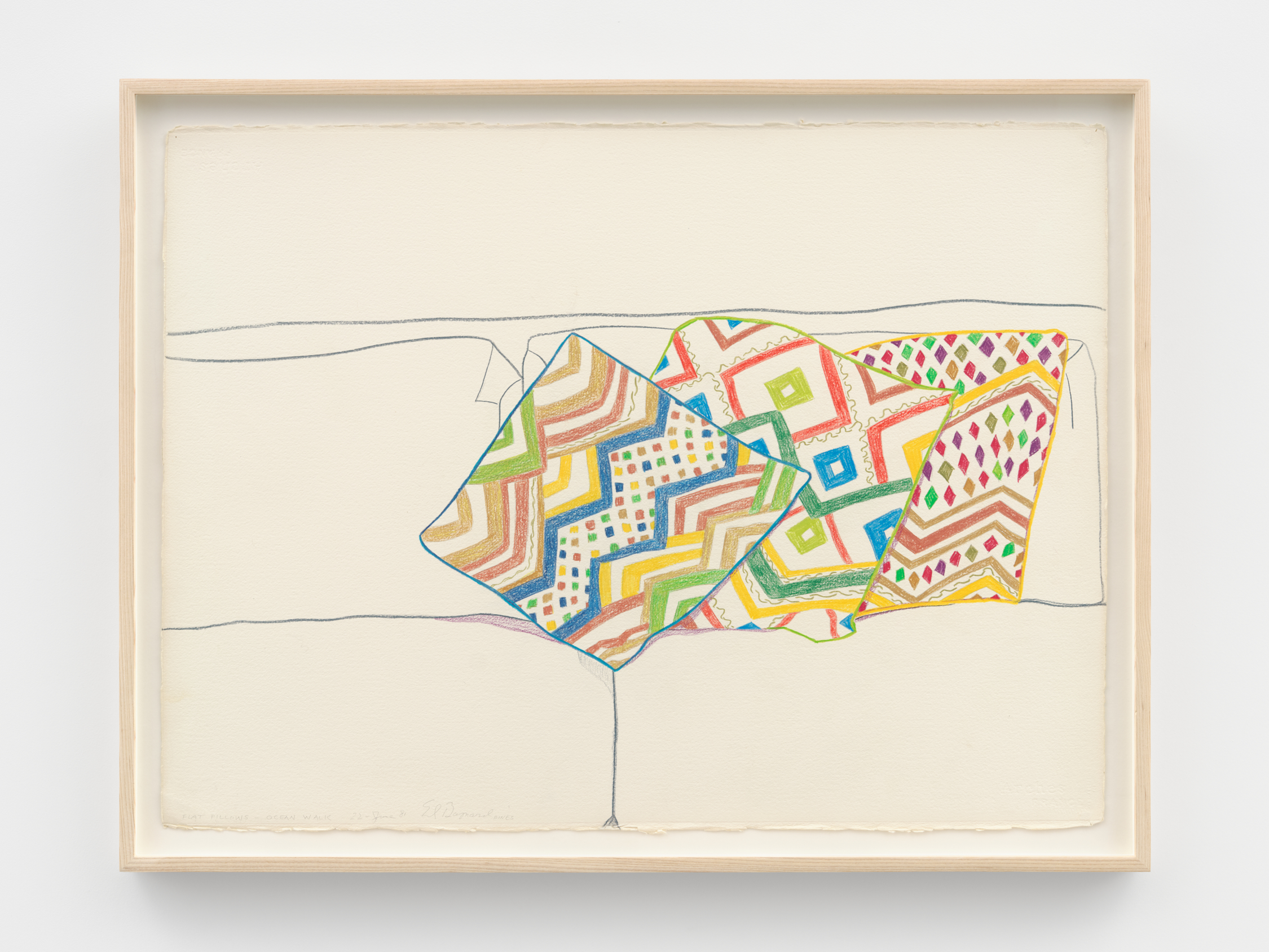
Flat Pillows - Ocean Walk (22 June 1981), 1981
Signed, titled, dated lower left recto
Colored pencil on Arches paper
22 1/2 x 30 1/4 inches (unframed)
24 5/8 x 32 1/4 (framed)
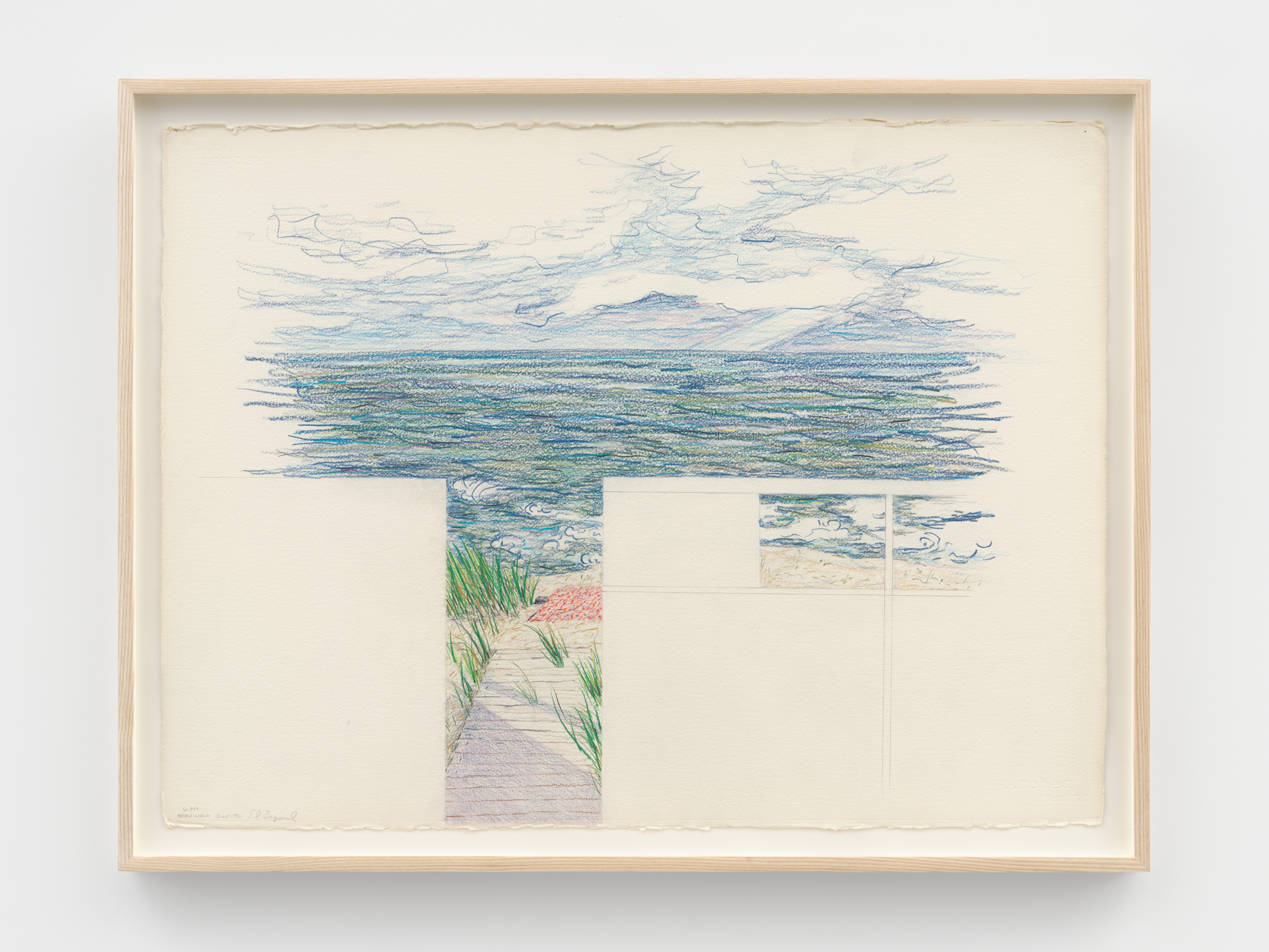
6pm / Ocean Walk (June 1981), 1981
Signed, titled, and dated lower left recto
Colored pencil on Arches paper
22 1/2 x 30 1/4 inches (unframed)
24 5/8 x 32 1/4 (framed)
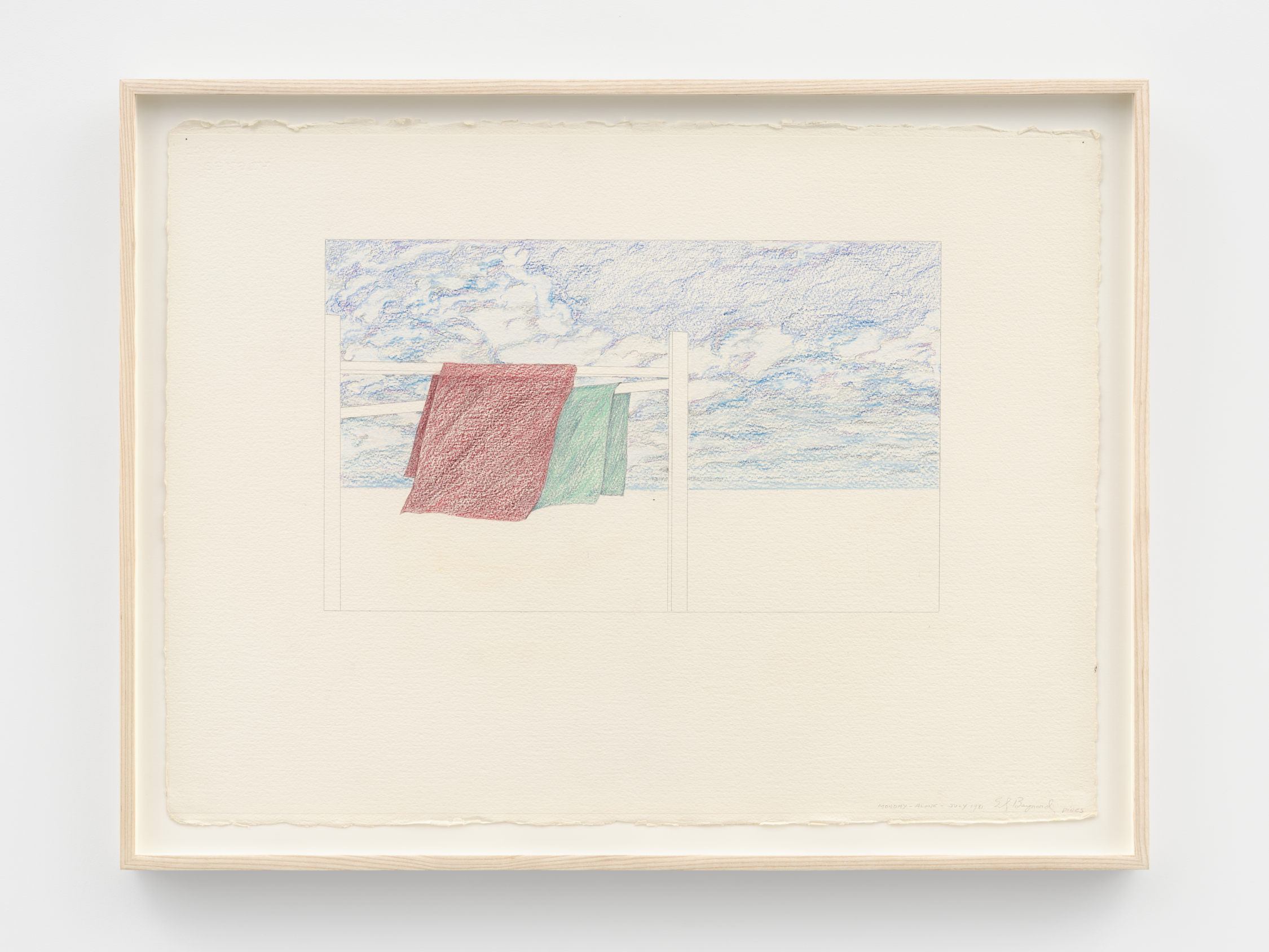
Monday - Alone (July 1981), 1981
Signed, titled, and dated lower right recto
Colored pencil on Arches paper
22 1/2 x 30 1/4 inches (unframed)
24 5/8 x 32 1/4 (framed)

Why It's Called The Pines (7 August 1981), 1981
Signed, titled, and dated lower right recto
Colored pencil on Arches paper
22 1/2 x 30 1/4 inches (unframed)
24 5/8 x 32 1/4 (framed)

Self Portrait - Sunset (Late July 1981), 1981
Signed, titled, and dated lower right recto
Colored pencil on Arches paper
22 1/2 x 30 1/4 inches (unframed)
24 5/8 x 32 1/4 (framed)
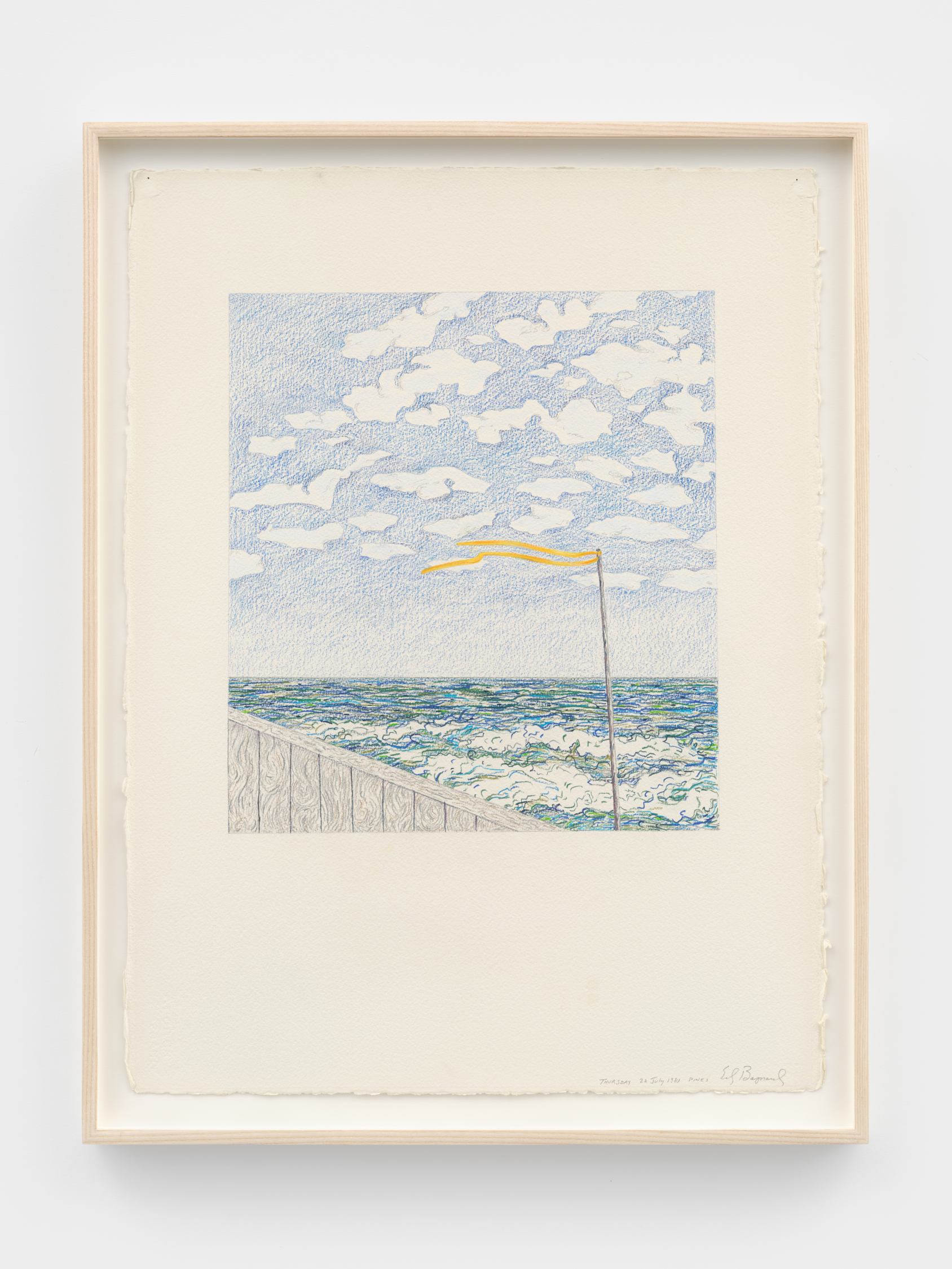
Thursday (22 July 1981), 1981
Signed, titled, and dated lower right recto
Colored pencil on Arches paper
30 1/4 x 22 1/2 inches (unframed)
32 1/4 x 24 5/8 (framed)
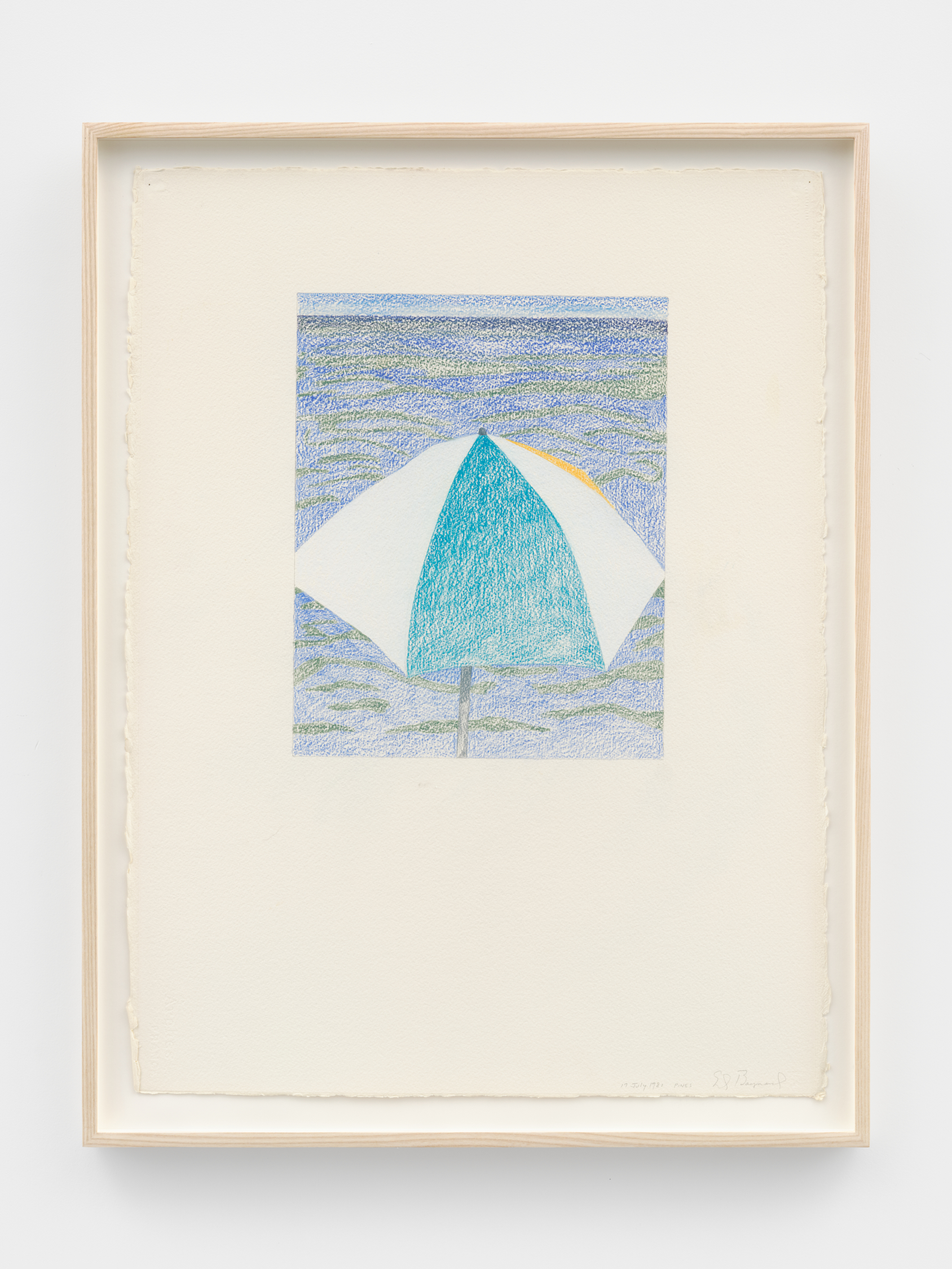
Untitled (17 July 1981), 1981
Signed and dated lower right recto
Colored pencil on Arches paper
30 1/4 x 22 1/2 inches (unframed)
32 1/4 x 24 5/8 (framed)
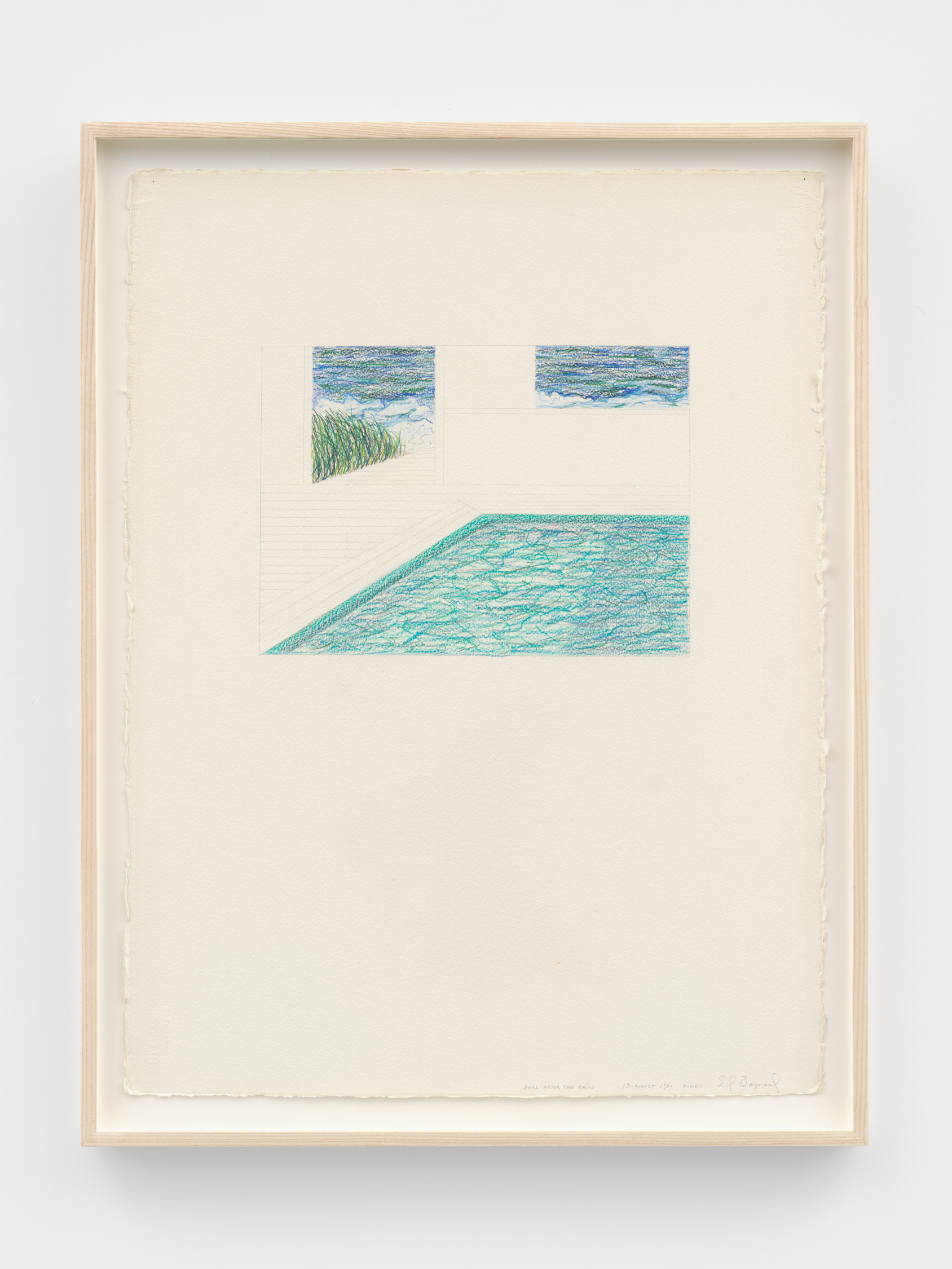
Pool After the Rain (13 August 1981), 1981
Signed, titled, and dated lower right recto
Colored pencil on Arches paper
30 1/4 x 22 1/2 inches (unframed)
32 1/4 x 24 5/8 (framed)
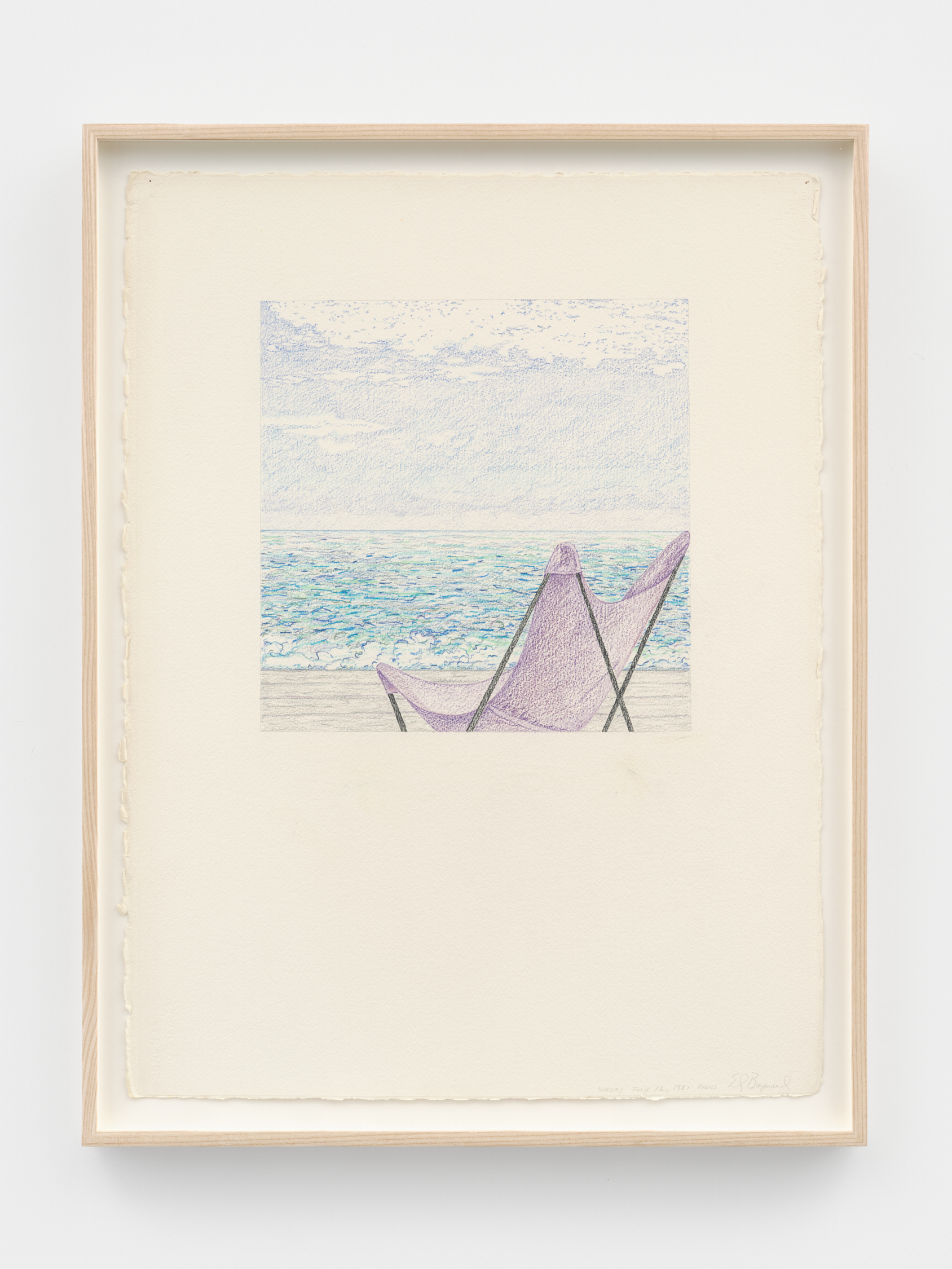
Sunday (12 July 1981), 1981
Signed, titled, and dated lower right recto
Colored pencil on Arches paper
30 1/4 x 22 1/2 inches (unframed)
32 1/4 x 24 5/8 (framed)
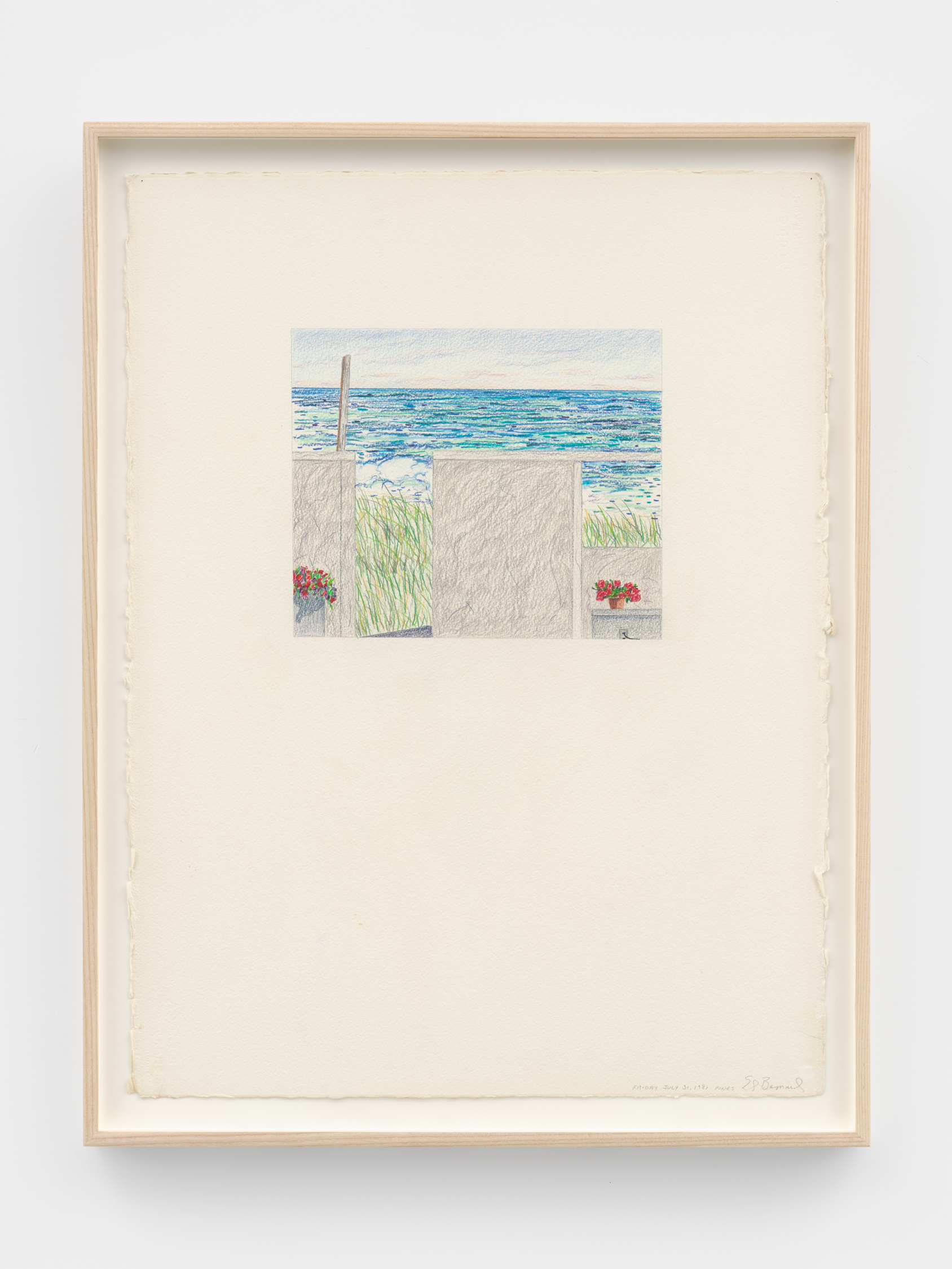
Friday (31 July 1981), 1981
Signed, titled, and dated lower right recto
Colored pencil on Arches paper
30 1/4 x 22 1/2 inches (unframed)
32 1/4 x 24 5/8 (framed)
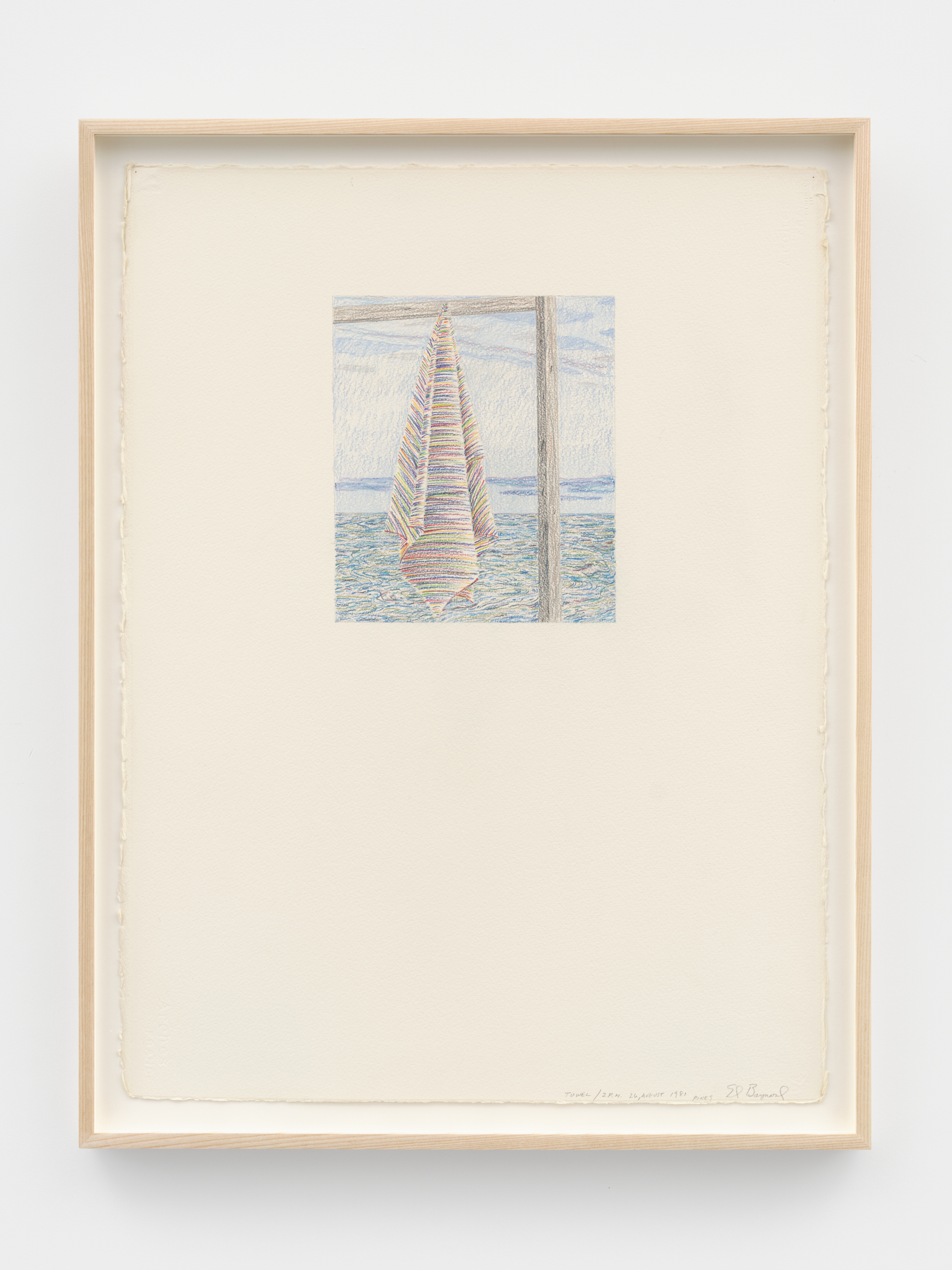
Towel / 2pm (26 August 1981), 1981
Signed, titled, and dated lower right recto
Colored pencil on Arches paper
30 1/4 x 22 1/2 inches (unframed)
32 1/4 x 24 5/8 (framed)
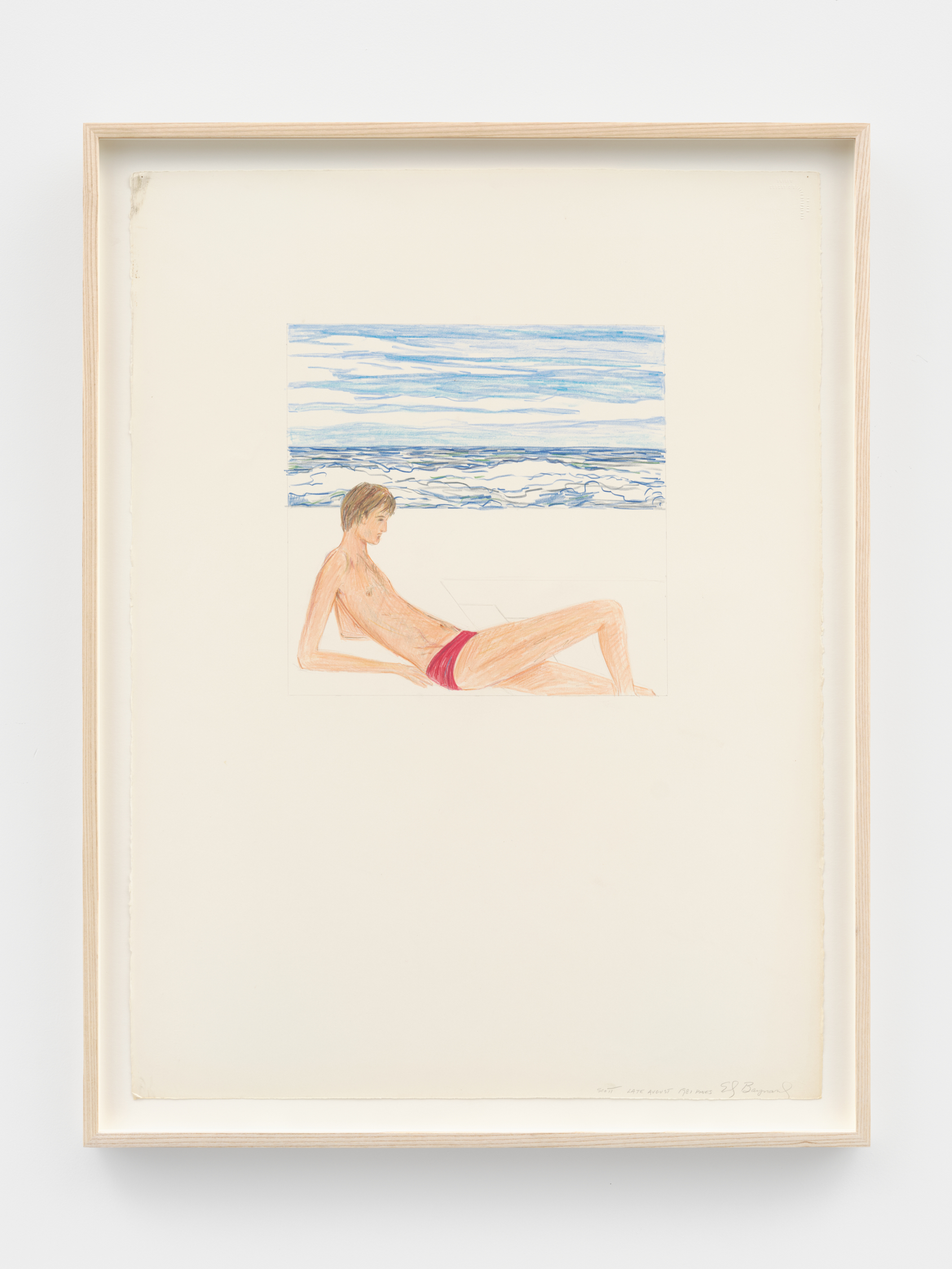
Scott (Late August 1981), 1981
Signed, titled, and dated lower right recto
Colored pencil on Arches paper
30 1/4 x 22 1/2 inches (unframed)
32 1/4 x 24 5/8 (framed)
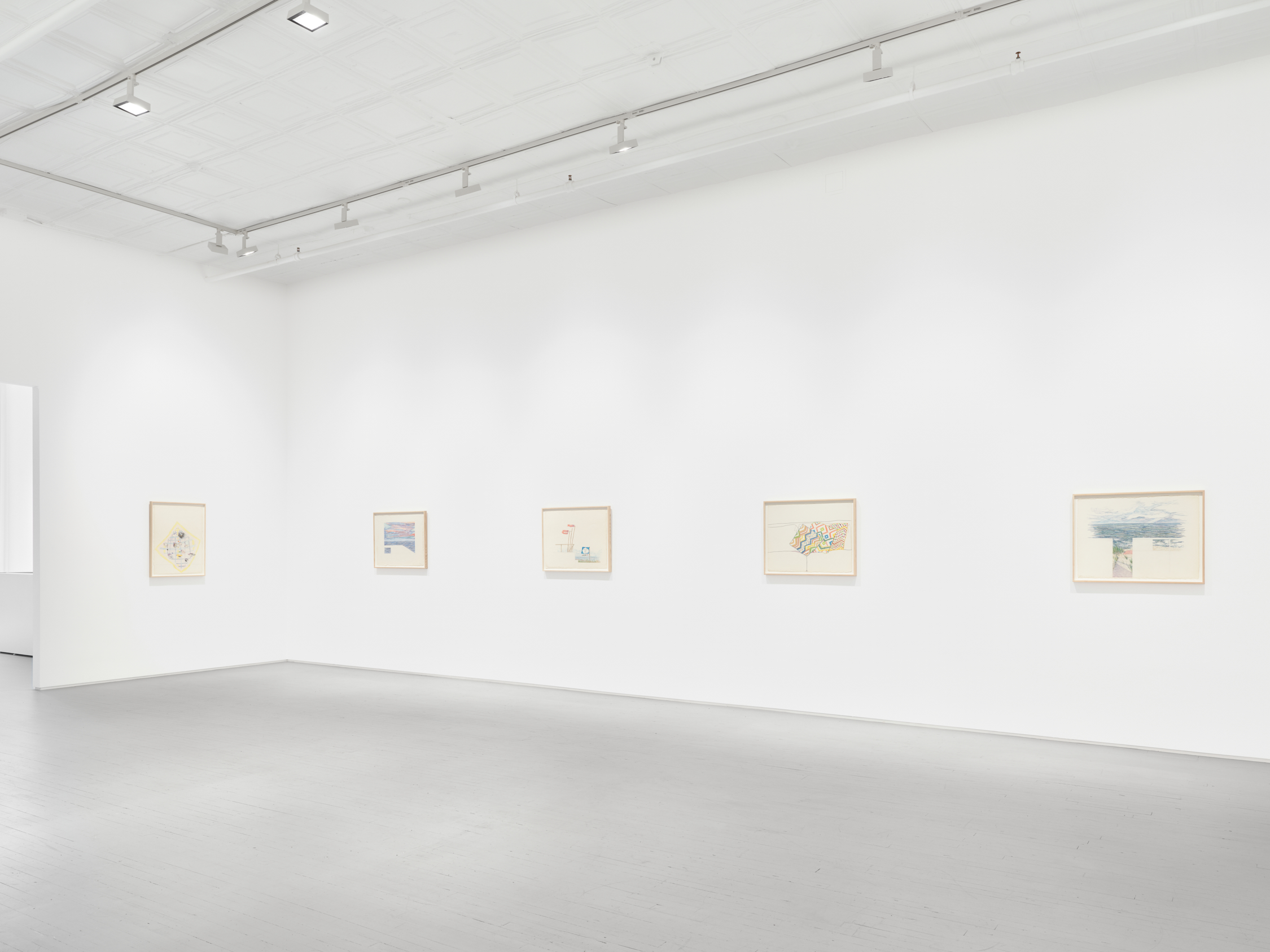
Installation view, Fire Island Pines 1981, James Fuentes, New York, 2024
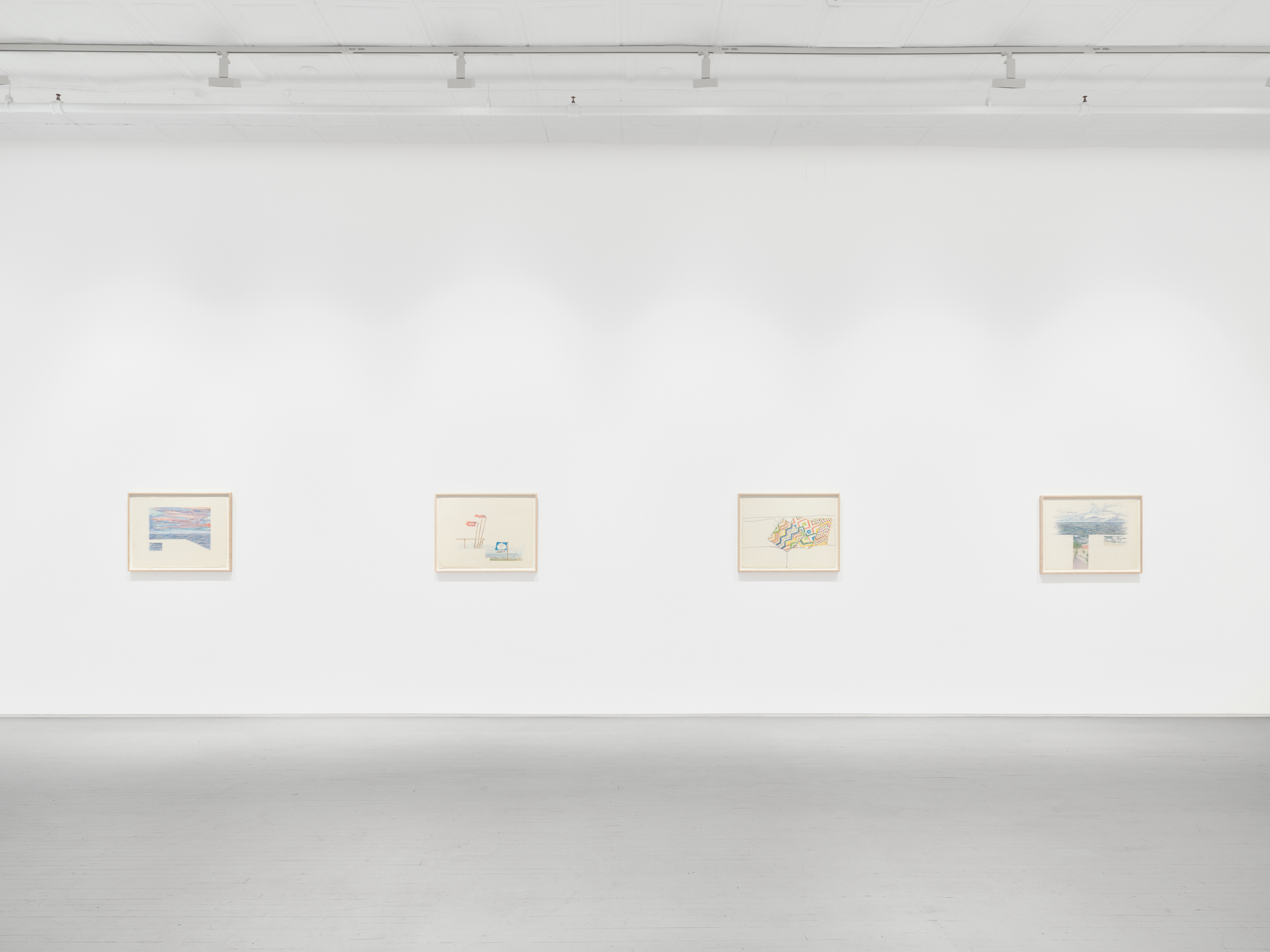
Installation view, Fire Island Pines 1981, James Fuentes, New York, 2024
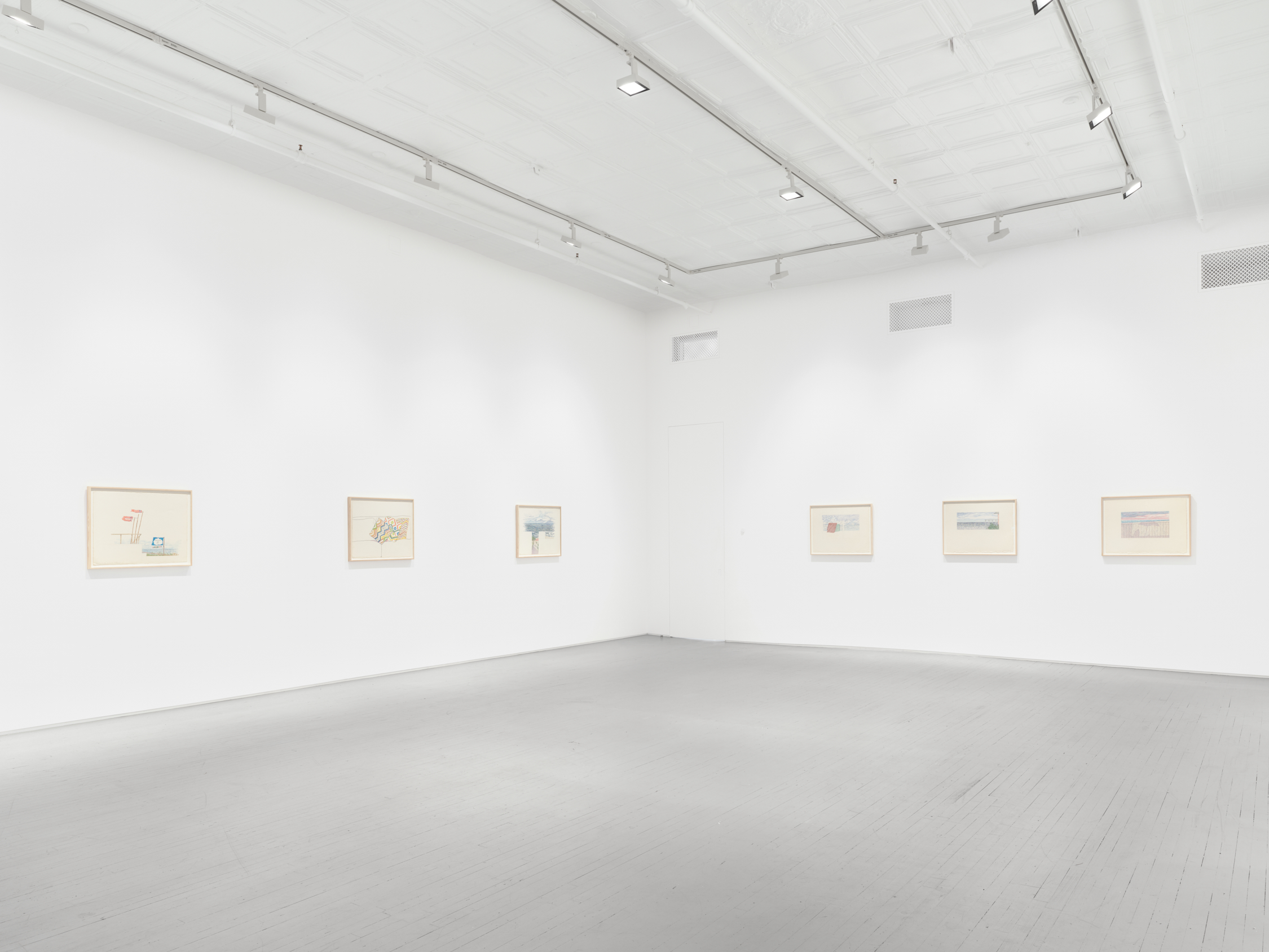
Installation view, Fire Island Pines 1981, James Fuentes, New York, 2024

Installation view, Fire Island Pines 1981, James Fuentes, New York, 2024
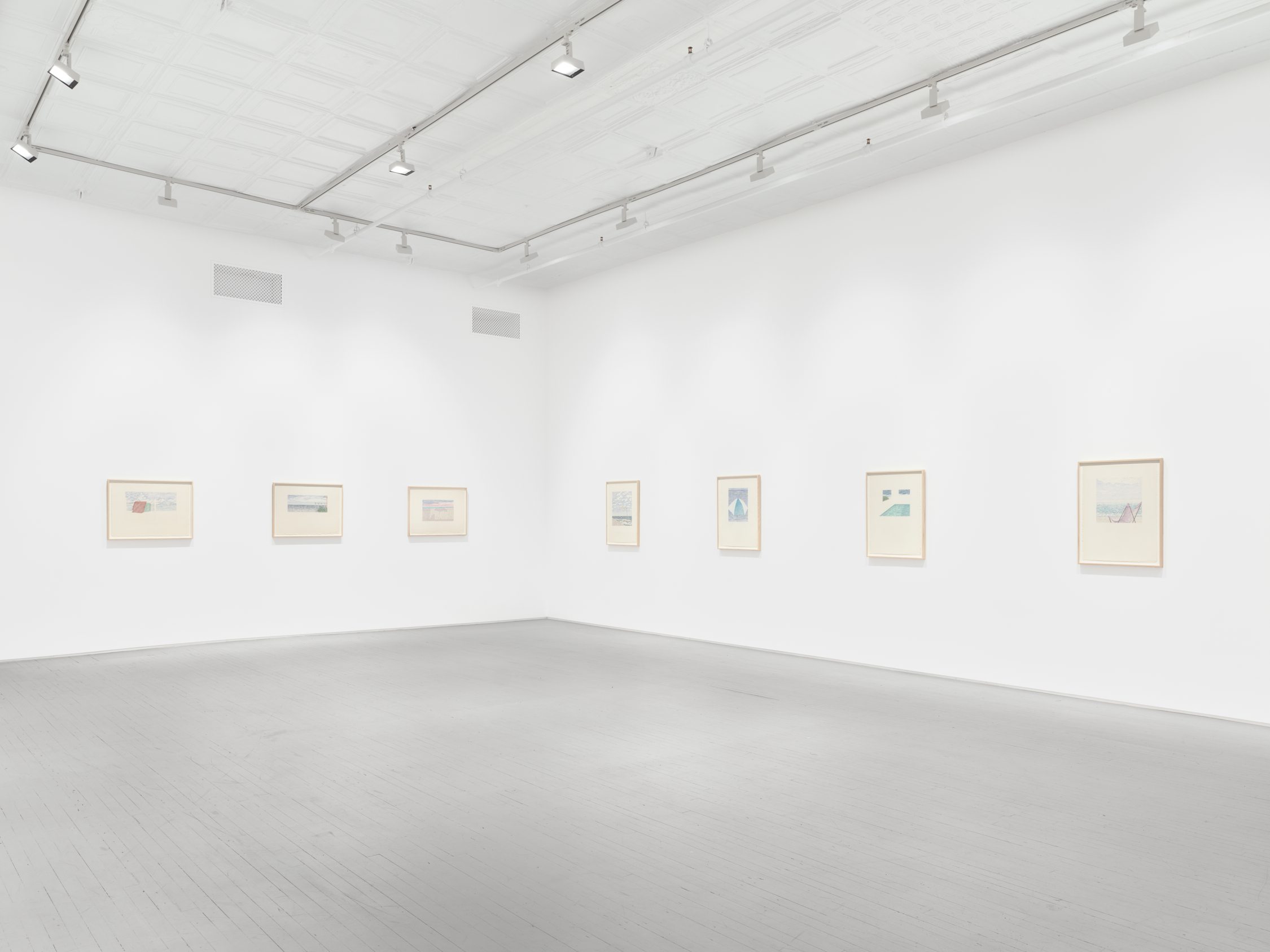
Installation view, Fire Island Pines 1981, James Fuentes, New York, 2024
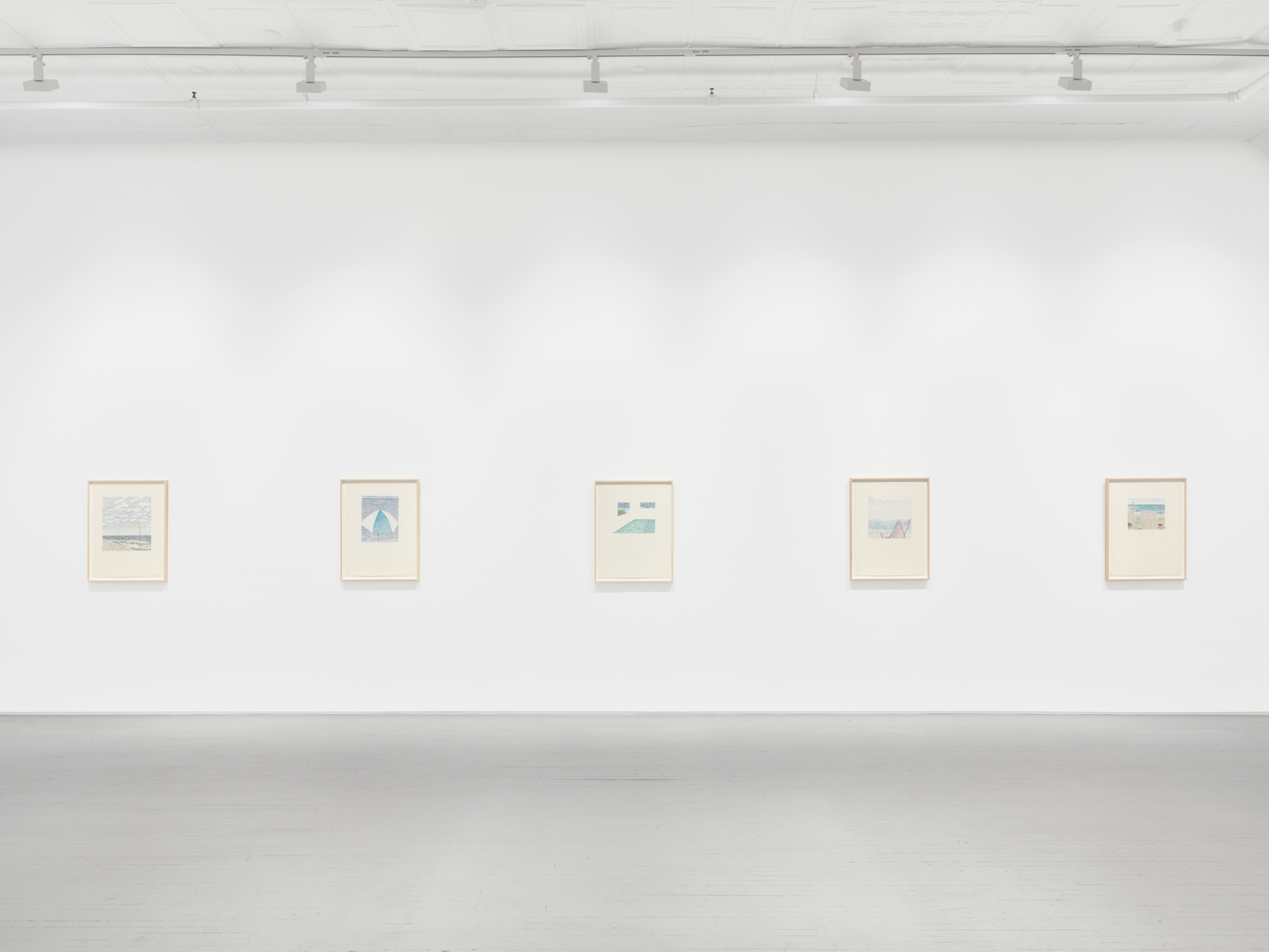
Installation view, Fire Island Pines 1981, James Fuentes, New York, 2024
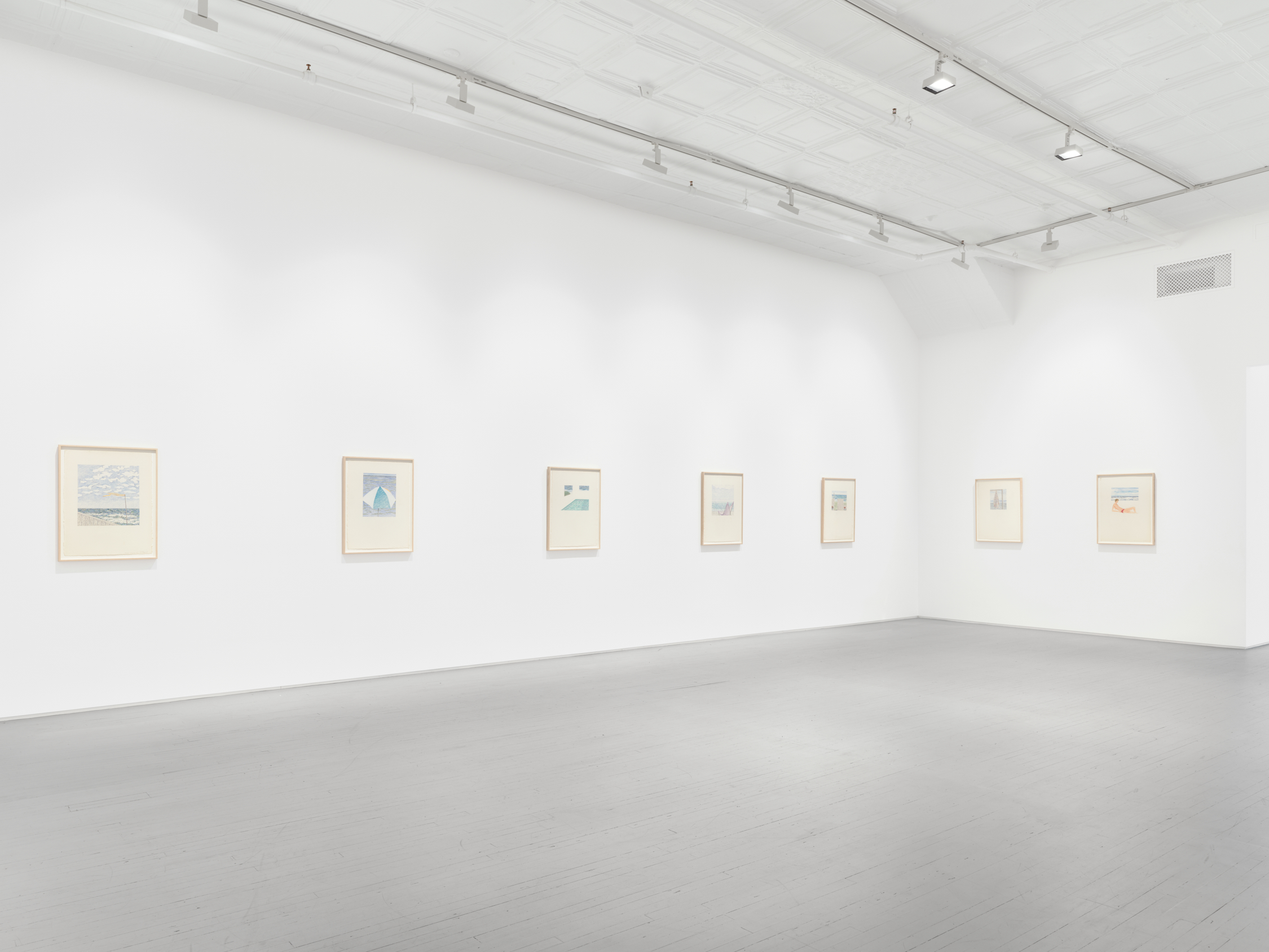
Installation view, Fire Island Pines 1981, James Fuentes, New York, 2024